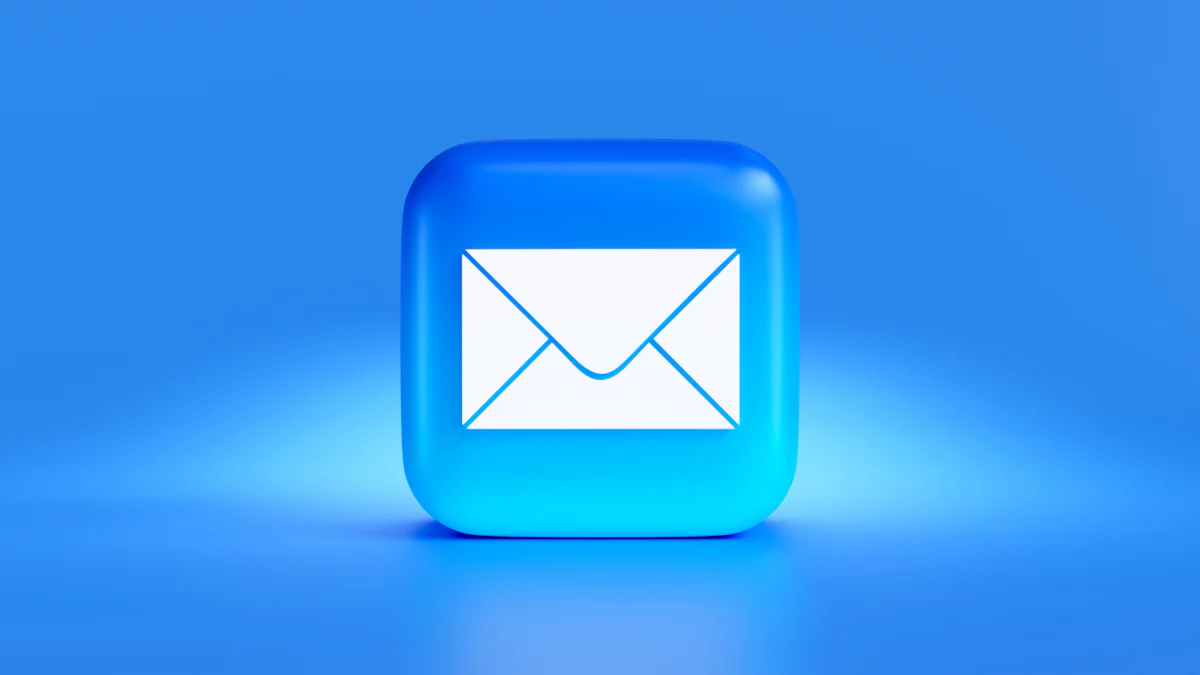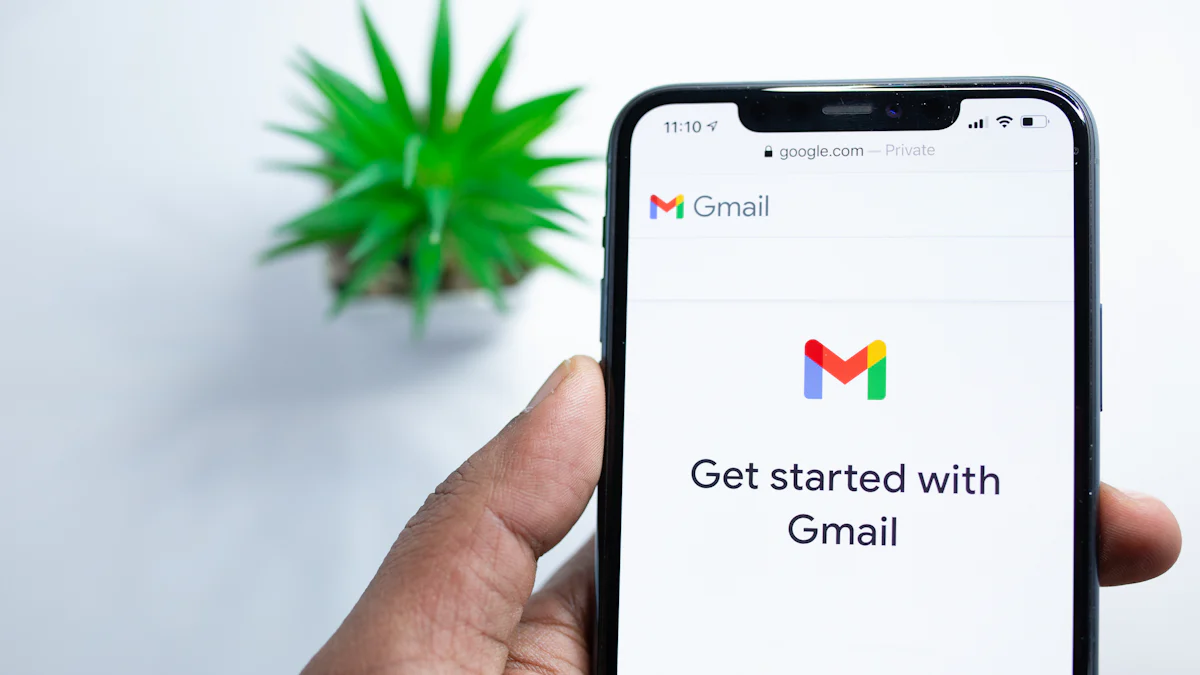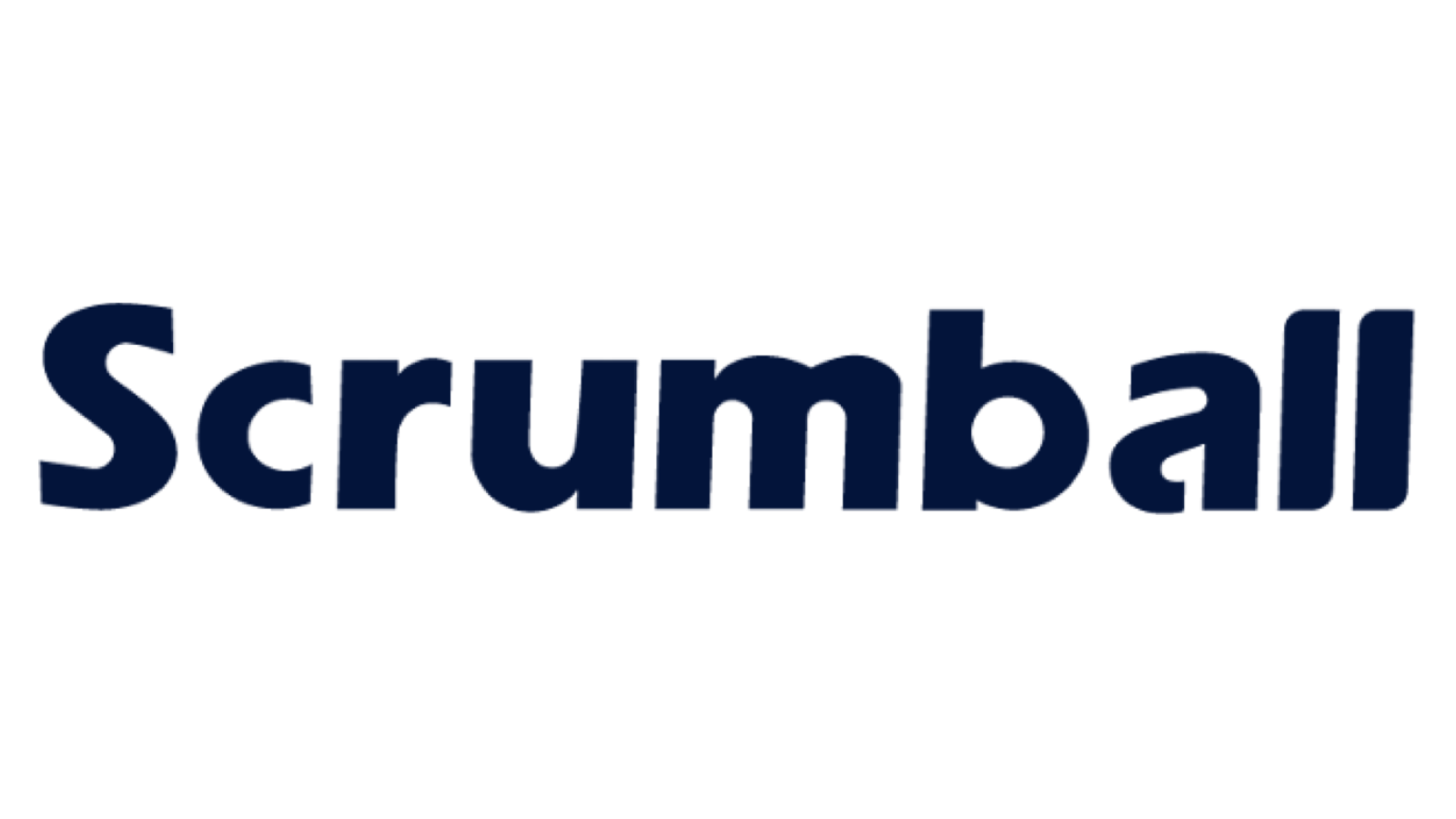Steps to Implement Email Marketing Automation for Your Business

Imagine sending the perfect email to your customers at just the right moment without lifting a finger. That’s the magic of email marketing automation. It saves you time and helps your business grow by delivering personalized messages that resonate. Did you know automated emails boast a 41% unique open rate and a 24% click-to-open rate? Plus, personalized emails can increase transaction rates by six times! By using email marketing automation platforms, you can boost customer engagement and see a significant jump in ROI. It’s time to let automation do the heavy lifting for your business.
Understanding Email Marketing Automation
What Is Email Marketing Automation?
Email marketing automation is a game-changer for businesses. It uses software to create, send, and manage email campaigns automatically. Instead of manually sending emails, you can set up workflows that trigger messages based on specific actions or behaviors. For example, when someone signs up for your newsletter, they can instantly receive a welcome email. This approach ensures your emails are timely, relevant, and personalized.
But it’s not just about scheduling emails. Marketing automation platforms go beyond that. They help you segment your audience, design engaging content, and track performance with robust analytics. These tools allow you to deliver personalized emails at scale, improve operational efficiency, and increase brand visibility. As a result, you can focus on strategic tasks while the platform handles the repetitive work.
“Automated email is a core component of marketing automation platforms, and with great reason. Automating your email is much more than scheduling messages to send when nobody’s at the computer.”
Key Benefits of Email Marketing Automation
Time-Saving and Efficiency
Imagine freeing up hours of your week by automating repetitive tasks. That’s exactly what email marketing automation platforms do. They streamline your workflow, so you can focus on growing your business. Whether it’s sending follow-ups or nurturing leads, automation ensures everything runs smoothly without constant oversight.
Improved Personalization and Engagement
Personalization is the secret sauce of effective marketing. With marketing automation, you can tailor emails to match your audience’s preferences and behaviors. For instance, you can send product recommendations based on past purchases. This level of personalization boosts customer engagement and makes your emails feel more relevant.
Increased ROI and Revenue
Marketing automation platforms don’t just save time—they also drive results. Businesses report increased revenue through timely upsells and cross-sells. By reaching customers at the right moment with the right message, you can turn casual browsers into loyal buyers. Plus, the data and analytics provided by these platforms help you refine your marketing strategy for even better results.
Step-by-Step Guide to Implementing Email Marketing Automation

Define Your Goals and Objectives
Align Objectives with Business Goals
Before you dive into automating your emails, take a moment to plan your email marketing goals. Think about how they align with your broader business objectives. For example, if your goal is to increase sales, you might focus on upselling or recovering abandoned carts. If you want to build stronger relationships, a welcome series or post-purchase follow-ups could be your priority.
Here’s how email campaigns can connect with business goals:
| Email Campaign | Feature | Specific Example |
|---|---|---|
| Welcome Series | Introduce new subscribers | “Thanks for signing up! Here’s what you can expect.” |
| Sales and Promotional Emails | Highlight limited-time offers | “Save 20% this weekend only!” |
| Cart Abandonment Emails | Recover potential lost sales | “Forget something? Here’s 10% off to complete your cart!” |
Examples of Common Goals
Your email marketing goals and strategy should focus on what matters most to your business. Here are some common objectives:
- Lead nurturing: Keep potential customers engaged until they’re ready to convert.
- Building brand awareness: Ensure your audience recognizes and remembers your brand.
- Increased ROI: Optimize campaigns to maximize returns on your investment.
- Upselling and cross-selling: Introduce complementary products or services to existing customers.
- Increased customer engagement: Foster stronger relationships through meaningful interactions.
By aligning your email automation strategy with these goals, you’ll create campaigns that deliver real results.
Understand and Segment Your Audience
Collect and Analyze Customer Data
To automate email marketing effectively, you need to understand your audience. Start by collecting customer data. Use tools like surveys, online tracking, and social media monitoring to gather insights. CRMs and email automation tools can help you organize this data for easy analysis.
Create Segments Based on Behavior and Preferences
Segmentation is the key to delivering relevant content. Divide your email list into groups based on behavior, preferences, or demographics. For instance, you can create segments for first-time buyers, repeat customers, or those who abandoned their carts. Tailor your messages to each group to boost engagement.
Here are some best practices for segmentation:
- Determine criteria for segmentation based on customer data.
- Use email automation tools to create and manage segments.
- Test and measure the effectiveness of your segmentation strategy.
When you understand your audience and segment them effectively, you’ll send emails that feel personal and timely.
Choose the Right Email Marketing Automation Platforms
Features to Look for in Marketing Automation Software
Not all marketing automation software is created equal. Look for platforms that offer:
- Integration capabilities
- Lead management
- Email marketing functionalities
- Social media automation
- Segmentation
- Analytics and reporting
- Testing
- Usability and set-up
- Security
- Support
These features ensure your email automation strategy runs smoothly and delivers results.
Examples of Popular Email Automation Tools
Here’s a quick look at some top email automation tools and their unique features:
| Tool | Unique Features |
|---|---|
| Retainful | Customizable templates, segmentation capabilities, automation triggers for welcome and abandoned cart emails. |
| Omnisend | Intuitive drag-and-drop email editor, automated workflows, reporting capabilities. |
| HubSpot | Automated email campaigns, targeted email campaigns, chatbots for instant support. |
| Mailchimp | Pre-set automations, segmentation tools, trigger-based emails, comprehensive analytics. |
| Constant Contact | Drag-and-drop editing interface, editable templates, real-time tracking of campaign results. |
| Freshworks | Automation workflows, segmentation, AI-powered tools including chatbots. |
| Zoho Campaigns | Wide range of automation workflows, connects with Zoho’s CRM, affordable pricing. |
Choose a platform that fits your needs and budget. The right tool will make it easier to automate email marketing and achieve your goals.
Create and Personalize Email Content
Design Mobile-Friendly and Engaging Templates
Your email templates should grab attention and work seamlessly on any device. Most people check emails on their phones, so mobile-friendly designs are essential. Use responsive templates that adjust to different screen sizes. Keep the layout clean and simple. Avoid clutter and focus on one clear message. Add visuals like images or GIFs to make your emails more engaging.
Interactive content can also boost engagement. Include polls, quizzes, or clickable buttons to encourage interaction. These elements make your emails stand out and keep readers interested. Always test your templates on multiple devices before sending them. This ensures your emails look great everywhere.
Use Personalization Tokens for Relevance
Personalization tokens make your emails feel like they’re written just for the recipient. Use them to include details like the recipient’s name, location, or recent purchases. For example, instead of saying “Dear Customer,” you can say “Hi Sarah!” This small touch increases engagement and makes your emails more relevant.
Personalized emails also improve your brand’s image. They show you care about your audience’s preferences. Tailored content leads to higher conversion rates because it speaks directly to the recipient’s interests. Plus, personalization tokens help you track user behavior, giving you insights to refine your marketing automation strategy.
Set Up Automated Workflows
Common Workflows (e.g., welcome series, abandoned cart emails)
Automated workflows simplify your email marketing campaigns. Start with a welcome series to greet new subscribers. These emails introduce your brand and set expectations. Abandoned cart emails are another must-have. They remind customers to complete their purchase and often include incentives like discounts.
Other workflows include post-purchase follow-ups, re-engagement campaigns, and birthday emails. Each workflow serves a specific purpose, helping you nurture leads and retain customers.
Map Triggers and Actions for Each Workflow
Mapping triggers and actions is key to effective automated workflows. Triggers are events that start the workflow, like signing up for a newsletter or abandoning a cart. Actions are the steps the workflow takes, such as sending an email or updating a contact’s status.
Outline your workflows visually to identify inefficiencies. Use marketing automation tools to set up triggers and actions. For example, when a customer abandons their cart, the trigger sends an email reminding them to complete the purchase. Continuously test and optimize your workflows to ensure they’re delivering results.
Analyze and Optimize Your Campaigns
Track Key Metrics (e.g., open rates, click-through rates)
Tracking metrics helps you measure the success of your email marketing campaigns. Monitor open rates to see how many people are reading your emails. Click-through rates show how many recipients clicked on links. Keep an eye on bounces and unsubscribes to assess deliverability and content value.
Conversion rates and ROI are also important. They reveal how well your emails drive desired actions and generate revenue. Use these insights to refine your marketing automation strategy.
A/B Test Subject Lines and Content
A/B testing is a powerful way to optimize your emails. Test different subject lines to see which ones get more opens. Try varying tones, like enthusiastic versus mysterious, or use questions instead of statements. Experiment with email content, such as image-heavy versus text-heavy designs.
You can also test call-to-action buttons. Change their color, size, or placement to find what works best. Use the results to improve future campaigns.
Refine Strategies Based on Data Insights
Data insights are your best friend for improving email automation. Segment your audience based on engagement patterns. Tailor your messages to each segment for higher relevance. Analyze sending times to optimize when your audience is most active.
Integrate your email campaigns with other marketing channels for a consistent message. Use interactive content like polls or videos to boost engagement. Regularly review your data and adjust your strategy to stay ahead.
Practical Tips for Effective Email Automation
Deliver Value to Subscribers
Your subscribers signed up for a reason—they expect value. To meet their expectations, align your emails with their journey. For example, new subscribers might appreciate a welcome email introducing your brand, while loyal customers may prefer exclusive offers or tips on using your products.
Keep your emails relevant by personalizing them based on segments like location, purchase history, or interests. Go beyond just using their names. For instance, if a subscriber recently bought a fitness tracker, send them workout tips or accessory recommendations.
Balance promotional content with helpful information. While discounts are great, they shouldn’t be the only thing you offer. Share how-to guides, industry insights, or even entertaining stories that resonate with your audience. Maintaining a consistent cadence of emails ensures you stay top-of-mind without overwhelming your subscribers.
Tip: Think about what your subscribers need, not just what you want to promote. This approach builds trust and keeps them engaged.
Avoid Overloading with Too Many Emails
Nobody likes an overflowing inbox. Sending too many emails can frustrate your subscribers and lead to unsubscribes. In fact, over 26% of consumers say frequent emails discourage them from buying from a brand.
Segment your email list to address specific needs. For example, send product updates to tech-savvy subscribers and lifestyle tips to those interested in wellness. This targeted approach ensures your emails feel relevant and not excessive.
Mix up your content. Alternate between promotional, informational, and social emails to keep things fresh. Timing also matters. Space out your emails to maintain visibility without overwhelming your audience.
Remember: Quality beats quantity. A few well-timed, valuable emails are far more effective than a flood of irrelevant ones.
Use Clear and Compelling CTAs
A strong call-to-action (CTA) can make or break your email. Use action-oriented language like “Shop now,” “Download today,” or “Sign up.” Keep it simple and direct. Avoid cluttering your CTA with unnecessary details.
Make your CTA stand out visually. Use contrasting colors to draw attention and place it prominently, ideally near the top of your email. Personalizing your CTA can also boost its effectiveness. For instance, “Explore deals for you, Sarah” feels more engaging than a generic “Check out our sale.”
Test different CTAs to see what works best. Experiment with placement, wording, and design. A well-placed, clear CTA increases the chances of your subscribers taking action.
Pro Tip: A vague or pushy CTA can turn subscribers away. Focus on clarity and relevance to encourage clicks.
Monitor Deliverability and Avoid Spam Filters
Email deliverability can make or break your marketing automation efforts. If your emails don’t reach inboxes, all your hard work goes to waste. So, how do you ensure your emails land where they’re supposed to? Let’s break it down.
First, check your email server settings. Misconfigured DNS records like SPF, DKIM, or DMARC can cause technical issues. These settings verify your emails as legitimate and prevent them from being flagged as spam. Regularly review and update these configurations to keep things running smoothly.
Next, focus on your sender reputation. Spam filters often block emails from senders with poor reputations. Use a reputable email service provider to maintain credibility. Also, comply with anti-spam regulations like CAN-SPAM or GDPR. This ensures your emails meet legal standards and stay out of spam folders.
Your email content matters too. Avoid spammy language like “FREE!!!” or “Act Now!” These trigger spam filters and hurt your deliverability. Instead, create valuable and relevant content that resonates with your audience. Keep your formatting clean and professional to build trust.
Don’t forget to verify your email list. Typos or outdated addresses can lead to bounces, which harm your sender score. Use tools to clean your list and remove invalid addresses. If a recipient’s mailbox is full, set up notifications for delivery failures. This way, you can reach out through other channels.
Finally, monitor key metrics like bounce rates and spam complaints. These numbers give you insights into what’s working and what’s not. Adjust your marketing automation strategy based on this data to improve results.
By following these steps, you’ll boost your email deliverability and make the most of your marketing automation campaigns.
Tip: Think of email deliverability as the foundation of your marketing automation strategy. Without it, even the best campaigns won’t succeed.
Examples of Successful Email Marketing Automation Campaigns

Welcome Email Series
A welcome email series is your chance to make a great first impression. When you welcome new subscribers, you set the tone for your relationship with them. Successful email automation in this area focuses on creating a warm, engaging introduction to your brand.
Here are some standout examples:
- Primal Kitchen shares their mission to "change the way the world eats" while highlighting the integrity of their ingredients.
- Atoms keeps it simple and conversational, making their emails feel personal and approachable.
- Brightland uses sections to showcase their unique product ingredients, offering valuable insights to new subscribers.
- Mystery Tackle Box allows subscribers to customize their email preferences, ensuring they receive content that matters to them.
- Our Place includes a referral program, encouraging subscribers to share the brand with friends while building trust through social proof.
These examples show how a well-crafted welcome series can engage and delight your audience. By using storytelling, personalization, and incentives, you can welcome new subscribers in a way that feels meaningful and memorable.
Abandoned Cart Recovery Emails
Abandoned cart recovery emails are a powerful tool for increasing revenue. When customers leave items in their carts, these emails remind them to complete their purchase. Successful email automation in this area often involves a series of emails sent at strategic intervals.
Here’s why they work:
- They recover lost sales by nudging customers to return to their carts.
- Personalized content, like product recommendations, makes the emails more engaging.
- Timing is everything. Sending offers in the second or third email often captures hesitant buyers.
- Businesses using these emails report better ROI, outperforming over 52% of competitors.
For example, you could send a friendly reminder first, followed by a discount offer in the next email. This approach keeps your brand top-of-mind while encouraging action.
Re-Engagement Campaigns
Re-engagement campaigns help you reconnect with inactive subscribers. These emails remind them of the value they’ll gain by staying connected. Simplicity is key here. Use concise messaging, eye-catching visuals, and a clear call-to-action to grab attention.
Here’s how to create an effective campaign:
- Use personalized subject lines to stand out in crowded inboxes.
- Reaffirm your value with compelling messaging.
- Include incentives, like discounts, to encourage action.
- Set up workflows to segment unengaged subscribers and tailor follow-ups based on their responses.
For example, you could send a message like, “We miss you! Here’s 20% off your next purchase.” This approach not only re-engages subscribers but also strengthens your relationship with them.
By implementing these strategies, you’ll create successful email automation campaigns that drive results and keep your audience engaged.
Post-Purchase Follow-Up Emails
Post-purchase follow-up emails are more than just a polite thank-you. They’re a golden opportunity to strengthen your relationship with customers and keep your brand fresh in their minds. When done right, these emails can turn one-time buyers into loyal advocates for your business.
Why should you care about post-purchase emails? Here’s the deal: they have an impressive 40.5% open rate, which is nearly double that of standard marketing emails. Plus, retaining customers is incredibly profitable. A mere 5% increase in customer retention can boost your profits by 25-95%.
So, how can you make the most of these emails?
- Ask for Feedback: Customers love feeling heard. Use follow-up emails to collect their thoughts on their purchase. This feedback helps you improve your products and overall experience.
- Address Issues Proactively: If someone shares negative feedback, don’t ignore it. Respond quickly and offer solutions. Turning a bad experience into a positive one can create loyal customers who’ll sing your praises.
- Offer Value: Share tips, guides, or how-to videos related to their purchase. For example, if they bought a coffee maker, send them a guide on brewing the perfect cup. This shows you care about their experience beyond the sale.
- Encourage Referrals: Happy customers are your best marketers. Include a referral program in your email. When customers refer friends, they help grow your brand organically.
Pro Tip: Consistent follow-ups keep your brand top of mind. Customers who feel valued are more likely to return and recommend you to others.
Post-purchase emails aren’t just about saying thanks. They’re a powerful tool to build loyalty, improve your offerings, and drive long-term growth. Don’t miss out on this chance to connect with your customers in a meaningful way.
Implementing email marketing automation might seem overwhelming at first, but breaking it into manageable steps makes it achievable. Start by identifying repetitive tasks, like sending welcome emails or recovering abandoned carts. Choose one or two high-impact workflows to automate and refine them over time.
The long-term benefits are worth the effort. Automation increases revenue with timely upsells, saves time for strategic planning, and enhances customer experiences with personalized content. It also optimizes workflows, reduces costs, and keeps your brand top-of-mind.
Ready to get started? Explore email automation platforms, map out your first workflow, and watch your business grow.
FAQ
What is the best way to start with email marketing automation?
Start small. Pick one workflow, like a welcome email series, and set it up. Use your email platform’s templates to save time. Test it before launching. Once you’re comfortable, expand to other workflows like abandoned cart emails or re-engagement campaigns.
Tip: Focus on one goal at a time to avoid feeling overwhelmed.
How often should I send automated emails?
It depends on your audience and goals. For most businesses, 1-2 emails per week work well. Avoid overloading your subscribers. Instead, focus on sending valuable, relevant content that keeps them engaged without feeling spammy.
Note: Monitor unsubscribe rates to find the right balance for your audience.
Can I use email automation for a small business?
Absolutely! Email automation saves time and helps you connect with customers. Even small businesses can benefit from workflows like welcome emails, birthday discounts, or product recommendations. Many platforms offer affordable plans tailored to small businesses.
Emoji Reminder: 🎉 Automation isn’t just for big brands—it’s for everyone!
How do I measure the success of my email automation campaigns?
Track key metrics like open rates, click-through rates, and conversions. Use A/B testing to see what works best. Review analytics regularly to refine your strategy and improve results.
Pro Tip: Focus on engagement metrics to understand how your audience interacts with your emails.
What’s the biggest mistake to avoid in email automation?
Don’t “set it and forget it.” Regularly review your workflows to ensure they’re still relevant. Outdated or irrelevant emails can hurt your brand. Always test and optimize your campaigns based on performance data.
Alert: Ignoring your automation can lead to missed opportunities and frustrated subscribers.
See Also
7 Key Actions to Determine Your Content Marketing ROI
7 Steps for Creating an Influencer Marketing Platform
7 Steps to Develop an Effective Influencer Marketing Plan
